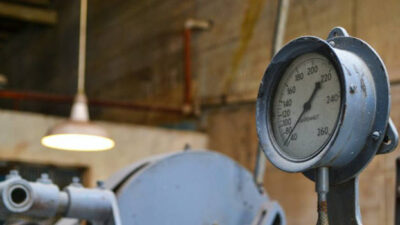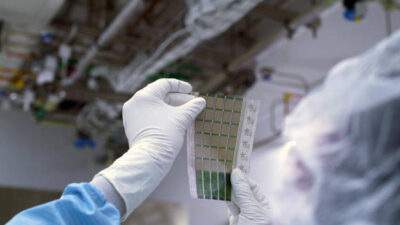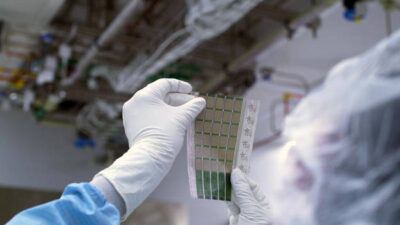When you need a temperature measurement, one of the most basic decisions is choosing which kind of sensor to deploy. The application should guide your decision.
Temperature variances in process industries can have significant impact on profits, safety, and quality. A variety of industries and applications are affected, including oil and gas, power, refining, petrochemical, pharmaceutical, and more. Monitoring temperature accurately is dependent upon several factors, including selecting the right sensor for the specific application and process.
Two of the most common temperature measurement devices are resistance temperature detectors (RTDs) and thermocouples (TCs). The technology behind them is different, each having its own benefits that drive appropriate selection.
An RTD uses the principle that the electrical resistance of a metal increases as temperature increases—a phenomenon known as thermal resistivity.
In comparison, a TC is a closed-circuit thermoelectric temperature sensing device consisting of two wires of dissimilar metals joined at both ends. A voltage is created when the temperature at one end of a wire or junction differs from the temperature at the other end. This phenomenon is known as the Seebeck effect. That voltage depends on the particular metal as well as the temperature difference. Comparing the different voltages created by the different metals is the basis for TC temperature measurements.
Comparing the differences
RTDs are constructed of a resistive material with leads attached and usually placed into a protective sheath. The resistive material may be platinum, copper, or nickel; the most common is platinum because of its high accuracy, excellent repeatability, and exceptional linearity over a wide range. It exhibits a large resistance change per degree of temperature change. The two most common RTD sensor styles are wire-wound and thin-film.
Wire-wound RTDs are manufactured either by winding resistive wire around a ceramic mandrel or by winding it in a helical shape supported in a ceramic sheath—hence the name wire-wound. For thin-film RTDs, a thin resistive coating is deposited on a flat (usually rectangular) ceramic substrate. Thin-film RTDs are typically less expensive than wire-wound RTDs because fewer materials are needed for their construction.
Normally, RTDs are much more repeatable and have better sensitivity than TCs. Long-term drift of an RTD is predictable, while a TC drift is often erratic. This provides the benefit of less frequent calibration and therefore lower cost of ownership. Finally, RTDs provide excellent linearity. When coupled with the linearization performed in a quality transmitter, a precision of about 0.1 °C is possible, which is much better than what is possible with a TC.
In comparison, a TC is a closed-circuit thermoelectric temperature sensing device consisting of two wires of dissimilar metals joined at both ends. Various combinations of metals are classified as types and have specific characteristics. The most common types are J (which uses iron and Constantan) and K (which uses Chromel and Alumel). TCs have faster response times and higher temperature ranges than RTDs, but are also less accurate. TCs have heavy gauge wire construction for durability and therefore can withstand high vibration (see Figure 1). Chart A compares key sensor characteristics.
Choosing the right sensor technology
When choosing the right sensor for your process and application, there are a few basic questions that you should ask. The answers will provide valuable insight for selecting the appropriate sensor.
1. What temperature range you are trying to measure? When selecting a sensor, it is important to determine the correct temperature range. If the temperature is above 850 °C, you must use a TC. If it is below 850 °C, you can select either an RTD or a TC. Also, keep in mind that wire-wound RTDs have a wider temperature range than thin-film RTDs (see Chart B).
2. What is your required sensor accuracy? Determining the level of accuracy needed is also an important factor in the selection process. In general, RTDs are more accurate than TCs, and wire-wound RTDs are more accurate than thin-film RTDs. Assuming there are no other factors driving the selection of one technology over the other, this guideline will help you find the most accurate sensor technology.
3. Is process vibration a concern? The amount of process vibration also needs to be considered when selecting a sensor. TCs have the highest vibration resistance of all of the sensor technologies. If you have a known high vibration, TCs will give you the highest reliability. Thin-film RTDs are also resistant to vibration; however, they are not as robust. Wire-wound RTDs should not be used in high-vibration environments.
The right choice brings the right results
The overall key to success is asking basic questions and matching up the information with the right sensor for your applications and process. An example would be adding a temperature measurement to a pipeline where the measurement is under varying conditions with constant vibration and a process temperature variance of 200 to 300 °C. The goal is to have the best possible accuracy despite these challenges.
To determine what type of sensor to use, first consider the differences between TCs and RTDs. The temperature range makes both sensor technologies feasible for this application. TCs are known for their higher vibration tolerance, so at a first glance TCs would appear to be a good option. However, in this specific instance the measurement requires the best possible accuracy. The right choice for this application would be a thin-film RTD. Thin-film RTDs are known for their higher tolerance to vibration than wire-wound RTDs, and will provide a higher accuracy than a TC.
A second example would be the temperature in a reactor that ranges between 550 and 900 °C with little vibration. The goal is to gain accuracy within ±5 °C. RTDs provide consistent accurate measurements, especially in environments with little vibration. However, don’t forget the temperature range. RTDs typically should not be used above 850 °C. Since the process temperature can range up to 900 °C, a TC would be selected. Sensors are more susceptible to failure and inaccurate measurements when used in improper temperature ranges. That is why it is critical to select the correct sensor.
Ashleigh Hayes is a marketing engineer for Emerson Process Management.
Key concepts:
- Measuring temperature is a basic requirement in virtually any process manufacturing environment.
- Two sensor technologies support the majority of installations.
- Selecting between the two main approaches depends on specific process requirements and conditions.
Online
www.rosemount.com/TempGuide



